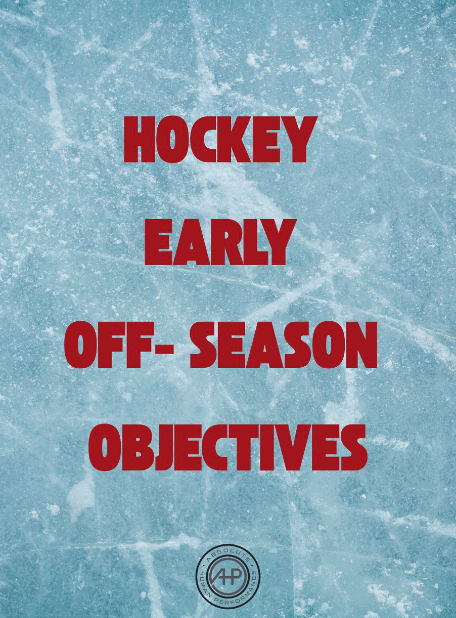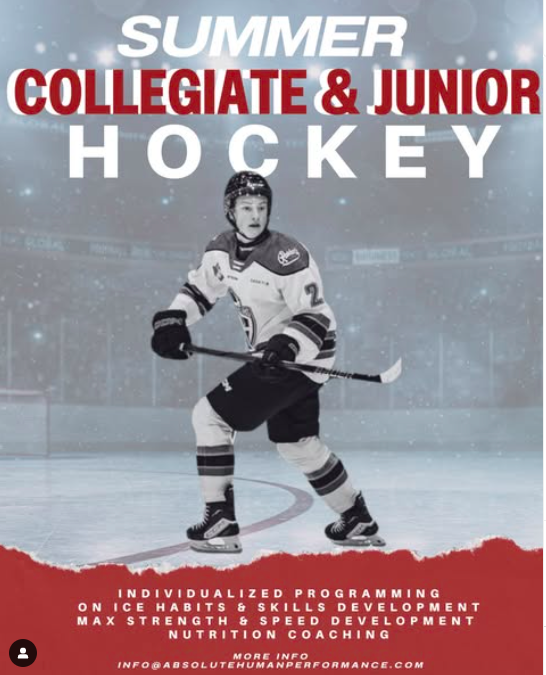Hockey Strength & Conditioning: Early Off-Season Priorities

We will have dozens of high school, junior, and collegiate hockey players scheduled to train at AHP over the spring and summer, so for the next month or so I will be spending a ton of time writing individualized strength and conditioning programs based on their assessment results.
I thought it would be a good time to outline the most common things I'll be addressing with my athletes to start the off-season on the right foot.
1) Master the sagittal plane and regain general movement quality
You'd be surprised how many elite athletes can't perform a clean squat pattern or execute a perfect plank following a long season. Skating is incredibly repetitive and the season really takes a toll on the body. We want to master the sagittal plane (squat, lunge, etc) again before moving on to the frontal (lateral movement) and transverse (rotational) planes as the off-season progresses.
2) Plan the off-season schedule.
Every player is unique in this regard. Each athlete will have a different timetable, a different status within their organization, and will either be a returning player or looking to make a jump to the next level. They will also be on the ice for different camps at various times in the spring, and will report to camp various times. They're also human beings and may have summer vacations sprinkled in. Before doing any long-term planning, I need to appreciate what each athlete's schedule looks like.
Discuss goals and give the athlete ownership of the process.
I think this is a huge one. Asking the athlete what he or she feels like are their biggest strengths and weaknesses and what they feel like they need to work on to improve on the ice empowers them to honestly evaluate where they're at. It then gives me an opportunity to educate them on some of the methods we are going to utilize to help them improve, and in turn achieve buy in that the work they're putting in is ultimately aiding them in their craft.
Regain lost mobility.
Hockey players tend to have really stiff, nasty, fibrotic adductors (groin), limited hip internal rotation and extension, heavily extended lumbar spines, and poor psoas recruitment (the psoas is one of your hip flexors).
This is because in skating there's a ton of hip abduction and extension, so the adductors need to be really strong to handle the eccentric control and demand of the aggressive hip abduction that occurs in skating.
I'm a big believer in taking some time off skating so we can prioritize restoring these mobility deficits.
Improve global strength while limiting or minimizing reactive training.
"You can't shoot a cannon ball out of a canoe."
We prioritize strength exercises like variations of the deadlift, squat, single-leg exercises, bench press, pull-ups, rows, and push ups to get really strong.
At the same time, we cut down the intensity and volume of any reactive training. Foregoing a lot of sprinting and jumping minimizes the risk of them tweaking something because they will be dealing with some soreness from the strength training - and it will also allow us to add strength quicker!

Thank you for taking the time to read, I'm really excited to help all our hockey athletes put in the work this off-season!
